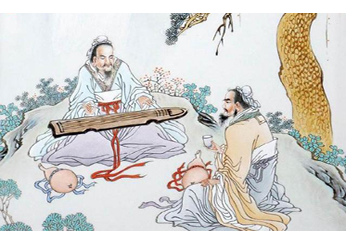What are the Characteristics of Chinese Guqin?
The guqin has seven strings and is tuned in a pentatonic scale, with major second or minor third between two strings next to each other. So playing the different strings may create the same tone,which is marvelous. Referring to the expression of music, the Chinese ancients considered that the "qin is the best of all the stringed instruments, which are the best of the eight kinds of musical instruments" (New Discourses: Guqin, Xinlun·Qindao in Chinese, by Huan Tan), meaning that the guqin is superior to other instruments in depth and strength of music.

There are four traditional ways to play the guqin:solo, qin ensemble and xiao (a vertically- played bamboo flute), qin accompanying a song, and ensemble of gagaku (a type of royal music of ancient China). Since ancient times, there had been thousands of solo pieces composed for the guqin. Some were written on the basis of natural scenes, such as Lofty Mountains (Gao Shan),Flowing Water (Liu Shui), Three Variations of Plum Blossom (Mei Hua San Nong)and Wild Geese over the Clam Sands (Ping Sha Luo Yan). Some of them express the feelings and emotions of people, such as Three Farewells at Yang Pass (Yang Guan San Die), Memory of an Old Friend (Yi Gu Ren), The Lament (Li Sao), and Misty Xiao Xiang River(Xiao Xiang Shui Yun).Other pieces
are about historical and folk stories, such as Song of the Autumn Frontier (Qiu Sai Yin), The Song of Chu (Chu Ge), and Eighteen Songs of a Nomad Flute (Hu Jia Shi Ba Pai). The guqin can well express the emotions of human beings or describe natural scenes.



